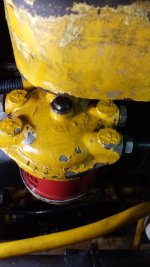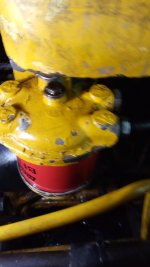I have a diesel 1975 Ford 3550 backhoe loader.
Model K5011F
Serial C429973
Unit 5E29B
Where is an easy place to grab 12 volt, key on power?
It looks like the key switch and most everything else is very hard to get to.
Would the neutral safety switch by the shifter be Key on power?
Any thoughts on a good place to mount a relay and toggle switch?
The toggle switch can be under the hood by the battery. If necessary.
Just looking for ideas and suggestions, before I see a better option, after the fact.
Thanks
Model K5011F
Serial C429973
Unit 5E29B
Where is an easy place to grab 12 volt, key on power?
It looks like the key switch and most everything else is very hard to get to.
Would the neutral safety switch by the shifter be Key on power?
Any thoughts on a good place to mount a relay and toggle switch?
The toggle switch can be under the hood by the battery. If necessary.
Just looking for ideas and suggestions, before I see a better option, after the fact.
Thanks



